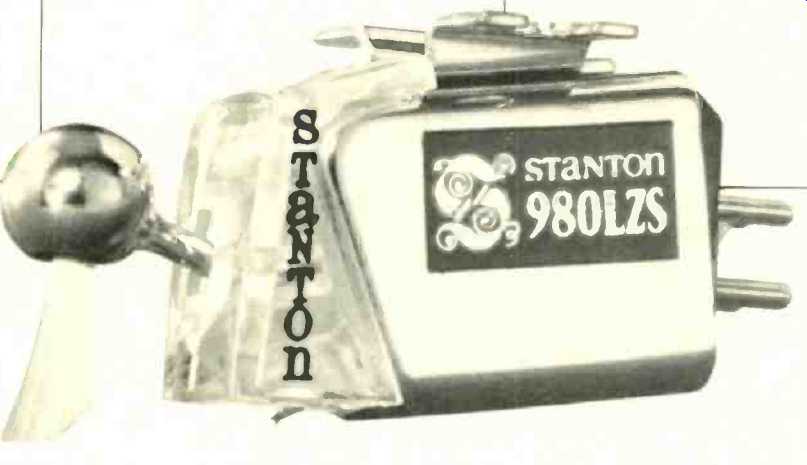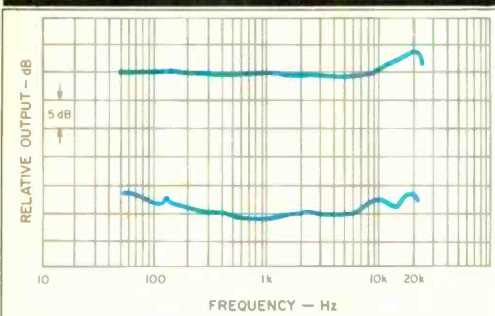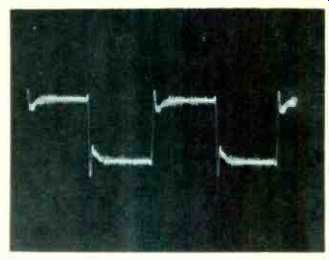
Manufacturer's Specifications:
Type: Moving magnet, low impedance.
Stylus Type: Nude stereohedron.
Tip Dimensions: 8 x 71 microns.
Tracking Force: 1 gram ±0.5.
Setting with Brush: 2 grams ±0.5.
Resulting Tracking Force: 1 gram ± 0.5.
Frequency Response: 10 Hz to 50 kHz.
Output: 0.06 mV/cm/S.
Channel Balance: Within 1 dB at 1 kHz.
Channel Separation: 35 dB at 1 kHz.
D.C. Resistance: 3 ohms.
Inductance: 1 mH. Weight: 5.5 grams.
Load Resistance: 100 ohms or more.
Load Capacitance: 1000 pF or less.
Replacement Stylus: D98S.
Price: $220.00; replacement stylus, $90.00.
In the Model 980LZS phono cartridge, Stanton Magnetics has introduced an entirely new type of design a low-impedance moving-magnet (MM) type. And, as important, aficionados of moving-coil (MC) cartridges will be surprised and pleased to learn that the 980LZS is indistinguishable from the very best moving-coil types in the most rigorous laboratory and aural tests. Stanton's is an impressive dual achievement.
The 980LZS is designed to be used in stereo systems which already have a high-gain, low-impedance moving-coil input or use outboard pre-preamps or step-up matching transformer.
These units should have an input impedance of 100 ohms or more, and because of the very low output voltage of the 980LZS, a gain stage at this point of not less than 20 dB is necessary to step up the voltage to the level of the usual magnetic phono cartridge input. Other design features of the 980LZS are an extremely low dynamic tip mass (0.2 mg), high compliance (30x10 cm/dyne at the resonant frequency),, and a user-replaceable stylus assembly with a samarium cobalt magnet. It is, indeed, a rare MC cartridge that has a user-replaceable stylus assembly. The 980LZS is a lightweight cartridge in contrast to the usual heavy MC cartridges, thus increasing its tracking ability on warped records. Because of its low-impedance coils, the 980LZS moving-magnet cartridge permits the use of long cables, being insensitive to capacitive loading. The usual removable Stanton "longhair" brush is a part of the cartridge body, cleaning the groove surfaces just before playing, and, at the same time, is intended to stabilize the tonearm.
The body of the 980LZS consists of a chrome-finished housing and a clear plastic stylus assembly housing. As usual, the stylus guard is wholly removable. The cartridge is packaged in a black-velvet case which contains the usual mounting hardware in a "pillbox," a small screwdriver, and an instruction manual.
For those needing a pre-preamplifier, the Stanton BA-26 has been specially designed for the 980LZS. It operates on three "C" batteries and has a pushbutton switch which either turns the unit on or else puts it in bypass mode.
Measurements
The Stanton 980LZS was mounted in a Technics headshell and used with the Technics EPA-100 tonearm mounted on a Technics SP-10 Mk II turntable. The cartridge was oriented in the headshell and tonearm with the Dennesen Geometric Soundtracktor. All measurements, where appropriate, were made using the Stanton BA-26 pre-preamplifier.
Laboratory tests were conducted at an ambient temperature of 70° F ±1° (21 .11° C) and a relative humidity of 62%, ±3%. The tracking force for all reported tests was at 1 .5 grams (brush removed), with an anti-skating force of 1 .8 grams. The cartridge, when lightly tapped, was found to be slightly micro phonic. As is my practice, measurements were made on both channels, but only the left channel is reported unless there is a significant difference between the two channels in which case both channels are reported for a given measurement.
Frequency response, using Columbia's STR-170, was +0.5 dB, -0.75 dB from 40 Hz to 7.5 kHz and -0.5 dB to +3.75 dB from 8 to 20 kHz, with +3.75 dB measured at 19 kHz. Separation was 25.5 dB at 1 kHz, 23.8 dB at 10 kHz, 28 dB at 15 kHz, and 25.8 dB at 20 kHz. Using the JVC TRS-1005 test record, the left-channel frequency response was +0, -0.5 dB from 1 to 10 kHz, +1 dB at 15 kHz, +1.2 dB at 20 kHz,-0.5 dB at 30 kHz, -2.5 dB at 40 kHz, and -5.5 dB at 50 kHz. The right-channel frequency response was +0, -0.2 dB from 1 to 8 kHz, +0.25 dB at 10 kHz, +0.75 dB at 15 kHz, +0.5 dB at 20 kHz, -2 dB at 30 kHz,-1 dB at 40 kHz, and-3.25 dB at 50 kHz. Left-channel separation was 21.5 dB at 1 kHz, 23.5 dB at 15 kHz, and 16 dB at 50 kHz, while the right-channel separation was 28.25 dB at 1 kHz, 24 dB at 15 kHz, 18.8 dB at 30 kHz, and 20.8 dB at 50 kHz. From these data it is evident that the frequency response of the 980LZS cartridge is excellent despite some output differences between the two channels beyond 20 kHz, and the high-frequency separation is most satisfactory across the entire measured audio spectrum.
The 1-kHz square-wave response shows a large overshoot followed by rapidly decaying, high-frequency ringing, a typical square-wave response for a moving-coil phono cartridge; this is the square-wave response, of course, of an MM type. The cartridge-arm low-frequency lateral resonance was a bit low at 6.5 Hz at an amplitude of +1 dB; vertical resonance was also 6.5 Hz. The effect of this rather low resonance was not evident when playing records.

Fig 1--Frequency response.

Fig. 2--Response to a 1-kHz square wave.
The following test records were used in making the reported measurements: Columbia STR-170, STR-100, STR-1 12; Shure TTR-103, TTR-109, TTR-1 10, TTR-1 15; Deutsches Hi-Fi No. 2; JVC TRS-1005; Nippon Columbia Audio Technical Record (PCM) XL-7004; B & K OR-2010, and the Ortofon Direct-Cut Pickup Test Record 0001.
Wt., 5.4 g; tracking force, 1.5 g; anti-skating, 1.8 g; direct output, 167 µV (0.05 mV/cm/S), output through the BA-26 head amplifier, 0.83 mV/cm/S; IM distortion: (4:1) +9 dB lateral, 200/4000 Hz, 1.1%; +6 dB vertical, 200/4000 Hz, 4.3%; crosstalk (using Shure TTR-109), 30 dB; channel balance, 0.3 dB; trackability: high freq. (10.8 kHz, pulsed), 30 cm/S; mid-freq. (1000 and 1500 Hz, lat. cut), 31.5 cm/S; low freq. (400 and 4000 Hz, lat. cut), 24 cm/S; Deutsches Hi-Fi No. 2 300-Hz test band was tracked cleanly to 95 microns (0.0095 cm), lateral at 17.9 cm/S at +10.33 dB and 43 microns (0.0043 cm), vertical at 8.12 cm/S at +3.64 dB. These last measurements made with the German record are quite remarkable, inasmuch as it is an extremely rare phono cartridge that is able to track more than about 86 microns on this test record.
The 980LZS phono cartridge cleanly played all the test bands on the Shure Obstacle Course Era Ill. The cartridge did not sound bright despite the rise in frequency response at the 12 to 20 kHz region. On the Shure Obstacle Course Era IV, the cartridge presented a hint of possible break-up on level 5 of the flute passage and an intermodulation type of distortion was becoming evident at level 5 of the harp-and-flute and flute and-orchestral bells test bands. Level 5 bands of these two combinations are recorded at velocities greater than 45 and 54 cm/ S, respectively. It is, indeed, a rare phono cartridge that can reproduce these bands cleanly. Overall, the Stanton 980LZS performed superbly in being able to track such difficult test records. It should be pointed out, however, that it is a rare commercially available phonograph record that has musical signals with a recorded velocity greater than 20 cm/S.
Use and Listening Tests
As usual, I performed many hours of listening tests both before and after measurements. During the period after measurements I felt that the BA-26 pre-preamplifier, though excellent, was a bit too noisy for my listening taste, so I continued the listening evaluation using the Audio Standards MX-10A pre preamplifier or the Ortofon T-30 wide-band transformer in the 48-ohm switch position. While listening to a wide variety of records, I was continually aware that the 980LZS sounded like a moving-coil cartridge. The bass was well defined and tight with good sonic clarity, as well as transient response and applause definition. Transparency of sound was excellent when reproducing the high recorded levels present on most direct-to-disc recordings. At no time did I notice any coloration of the music. The 980LZS is also, one of the very few phono cartridges that can cleanly reproduce the cannon fire on the Telarc DG-10041 recording of Tchaikovsky's 1812.
My final aural assessment of the 980LZS was made listening to dbx-encoded records, thus eliminating the record-surface noise that constantly competes with the recorded music. During this listening period, it became quite evident that the cartridge was reproducing instrument definition to an even greater degree than I had noticed in the past.
The 980LZS may open a new era in phono cartridge design philosophy. Certainly, the 980LZS merits serious consideration by all music lovers and, in particular, by those who espouse the merits and philosophy of the MC phono cartridge.
-B. V. Pisha
(Source: Audio magazine, Feb. 1982)
Also see:
Stanton Model 881S Stereo Phono Cartridge (Nov. 1978)
Stanton Permostat Anti-Static Record Treatment (May 1979)
Stanton Magnetics (ad, Nov. 1978)
Goldring G-920 IGC Cartridge (Feb. 1982)
Sumiko MDC-800 Tonearm/Talisman S Cartridge (Sept. 1983)
= = = =